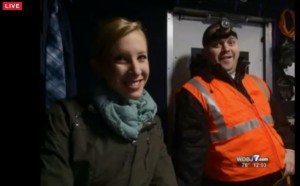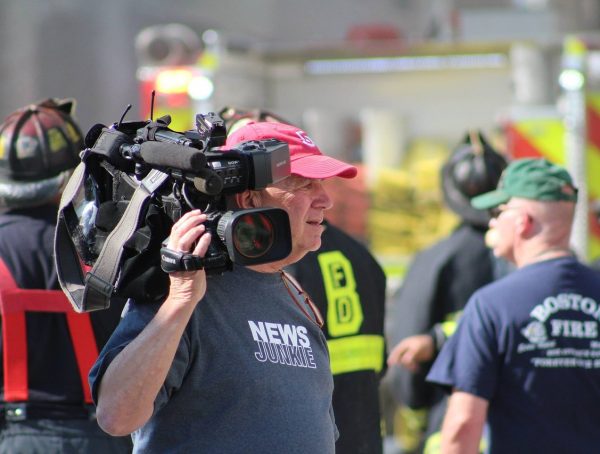 The murder of two TV journalists by a former reporter at their station has shocked us all. They were shot to death in the middle of a live report or the morning show at WDBJ in Roanoke, Virginia. Viewers heard reporter Alison Parker scream. Photographer Adam Ward managed to capture an image of the shooter, who was quickly identified and who later killed himself.
The murder of two TV journalists by a former reporter at their station has shocked us all. They were shot to death in the middle of a live report or the morning show at WDBJ in Roanoke, Virginia. Viewers heard reporter Alison Parker scream. Photographer Adam Ward managed to capture an image of the shooter, who was quickly identified and who later killed himself.
The shooting has prompted a lot of chatter about live shots and the safety of TV journalists in the field. Should stations routinely provide security for their live crews? Scale back their use of live reporting? Stop posting live shot locations on social media?
No station could afford to send security with every crew, and picking and choosing who gets security and who doesn’t is no guarantee of safety. After a rash of equipment thefts, some West Coast stations hired private security guards to accompany crews on assignments, particularly after dark in Oakland. But earlier this month, a photographer for KNTV was pistol-whipped and two stations had gear stolen during early-morning live shots across the bay in San Francisco. No one expected that location to be dangerous. And no one could have predicted that a feature story about the anniversary of a local attraction in Virginia would end in gunfire and death.
Could the shootings lead TV stations to do fewer live reports out of concern for the safety of their staffs? I wouldn’t bet on it. Consultants tell stations that live shots draw viewers, and they’ve become so ingrained in TV newsrooms that producers demand them, even when there’s no good reason to go live. But I do hope stations will rethink how they do live shots. Technology has made it possible for a journalist working alone to go live from almost anywhere. That’s risky, almost by definition. I also hope news managers will take this opportunity, as some already have, to talk to their staffs about staying safe. No one should be forced into a situation where they feel vulnerable.
But that’s not going to keep live crews from being the target of harassment or worse. As Mark Joyella points out, “The live shot is an exercise in vulnerability.” CNN anchor Robyn Curnow explains: “Cameraman looking into lens, reporter focused on camera. Easy targets.”
One of the oldest truisms in TV news is that a camera is an a**hole magnet and it’s more true than ever, thanks in part to social media. Obscenities and threats hurled at reporters live on the air wind up getting millions of views on YouTube. I blame a general coarsening of society and the continuing decline in trust in the news media. What can be done about that?
Maybe taking this opportunity to remind people why journalists do what they do, and the risks they take to do it. The Committee to Protect Journalists lists 39 journalists killed around the world this year alone, just for doing their jobs. Today, that list grew by two.
Reporter Alison Parker was 24. Photographer Adam Ward was 27.
Updated August 27 to add excerpt from Joyella report









1 Comment
[…] and station managers to consider using live shot delay buttons (similar to what is done in radio), think about the dangers of one man banding and raise the issue of live crews routinely feeling very vulnerable while on live shots. All of […]